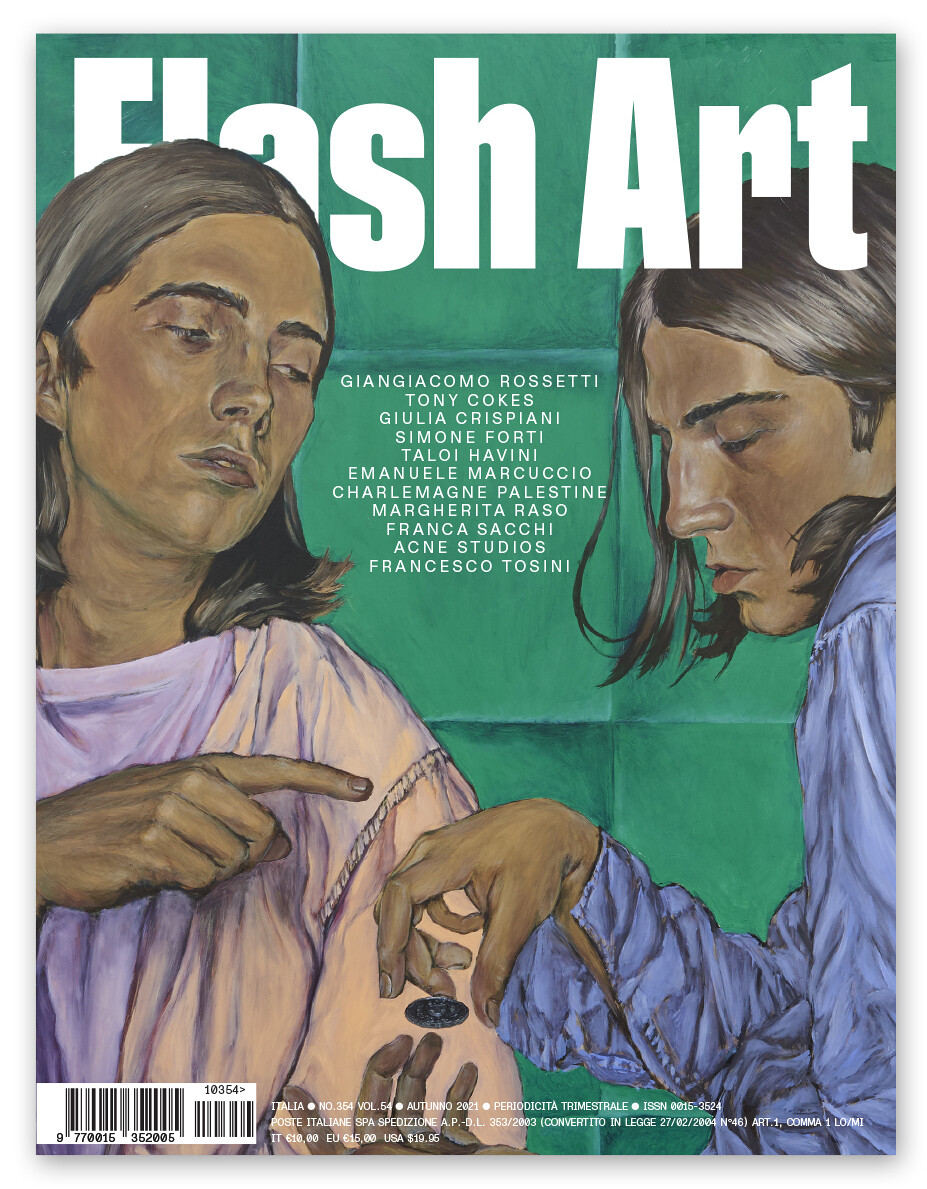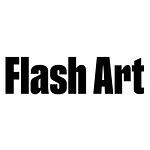This issue of Flash Art Italia rediscovers personalities who have silently left a mark on current art practice through the use of new languages that reflect on the present via a more or less arbitrary medium specificity. A curious sense of solastalgia emerges in these pages, starting with Giangiacomo Rossetti’s painting — the cover story of the issue — as analyzed by Saim Demircan, who considers how the invisible threat of the virus is presented through bucolic subjects that suggest a desire to escape from an infected world.
In an intimate conversation with Patrick Steffen, Simone Forti talks about the journey that led to her first major Italian institutional exhibition, a show that includes a corpus of little-shown works and new productions, and highlights her constant need to renew her understand of the world around her. Meanwhile Franca Sacchi, who was at the vanguard of the electronic music revolution in Italy, talks to Charlemagne Palestine about the evolving character of art making since the 1960s.
Samuel Gross and Daniele Milvio reflect on Emanuele Marcuccio’s work, shedding light on his unique grammar of materials and objects, which is more oriented toward conveying “transitions of generational status” rather than respecting or emulating specific formal criteria. Margherita Raso’s use of material is more destructuring, as evidenced by Eleonora Milani’s analysis of its deeply perceptual qualities, suggesting a reading of her sculptural work as a threshold to cross within an “expanded verticality.” Francesco Tosini’s interactive project, accompanied by Niccolò Gravina’s words, reinterprets sacred Tibetan paintings with highly aesthetic visual compositions created using L-system technology.
Also in this issue: Canada Choate discusses with Tony Cokes the role of music and words in his work; Chus Martínez’s column “The Age of Love” continues her contemplation of emotion in contemporary art, dedicating this third chapter to Taloi Havini’s presentation at Ocean Space in Venice; publisher Gea Politi, in conversation with Acne Studios founder Jonny Johannson, focuses on the publishing project Acne Paper, one of several experimental pinnacles in the history of the brand; in her “Letter from the City,” Giulia Crispiani presents an iridescent, dysfunctional portrait of Rome.
Reviews: Laura Grisi “The Measuring of Time” Muzeum Susch / Bruce Nauman “Contrapposto Studies” Punta della Dogana, Venice / “STOP PAINTING” Fondazione Prada, Venice / Michael Krebber “Studiofloor and Diamond Paintings” Fondazione Antonio Dalle Nogare, Bolzano / Damien Hirst “Forgiving and Forgetting” Gagosian, Rome / “Punto di Equilibrio. Pensiero spazio luce da Toyo Ito a Ettore Spalletti” MAXXI L’Aquila.
Get your print copy here or subscribe for digital access here.



